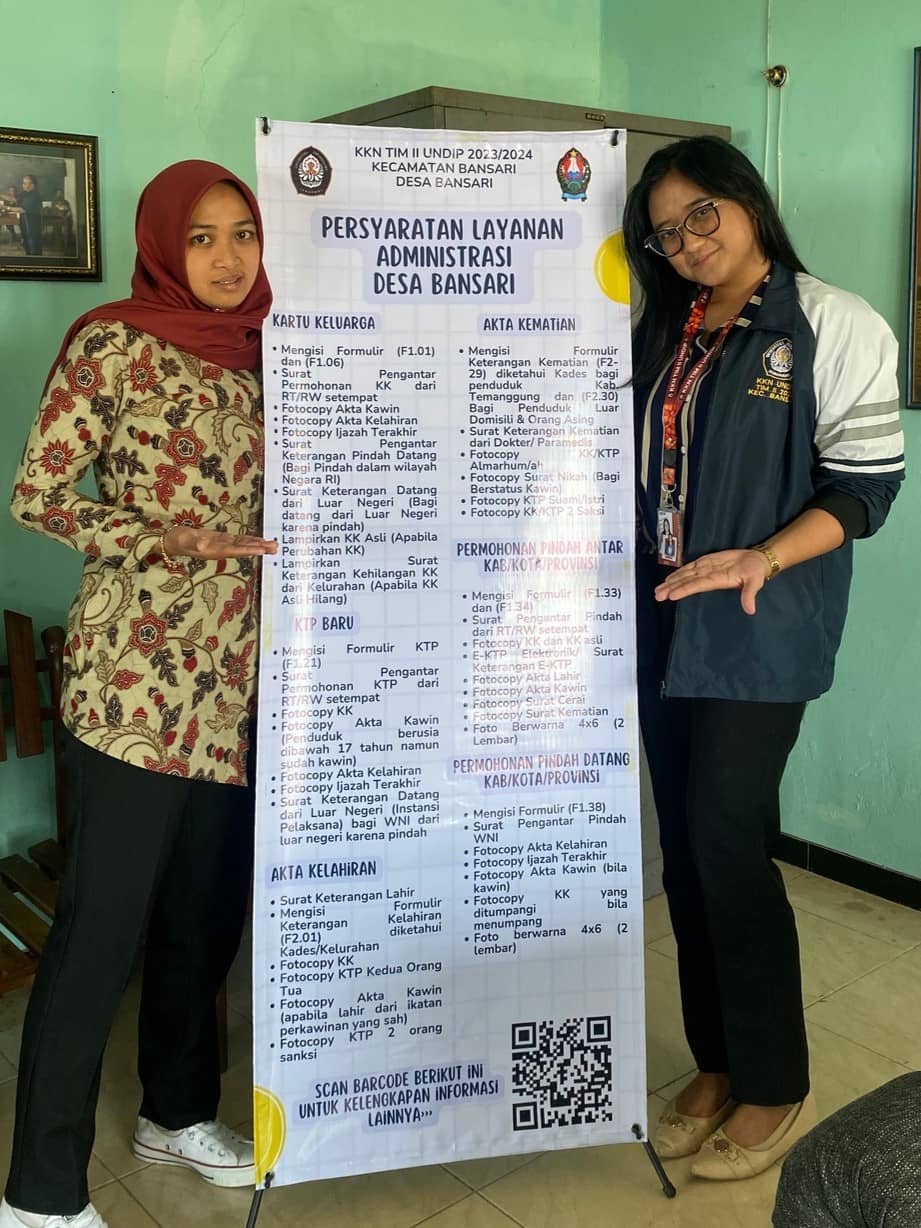Students from the Public Administration Department, Faculty of Social and Political Sciences, who are part of the 2023/2024 Team II Community Service Program (KKN) at Universitas Diponegoro (UNDIP), have introduced a digital breakthrough aimed at enhancing administrative service efficiency at the Bansari Village Office, located in Bansari District, Temanggung Regency.
The innovation introduced by these KKN students is the launch of a Linktree, which has been converted into a QR Code (Barcode). With this innovation, all residents of Bansari Village now can simply scan the code to access various village administrative services quickly and efficiently. Available services include the List of Bansari Village Administrative Requirements, Organizational Structure of Bansari Village Officials, Vision and Mission of Bansari Village, and the Bansari Village Website.
An Effective Solution to Administrative Challenges
The main goal of this innovation is to provide a solution to administrative service challenges, which often require lengthy and complex processes. This innovative program was implemented on July 30, 2024. During its execution, UNDIP Community Service Program students from the Public Administration Department also provided guidance to Bansari village officials on accessing the Linktree and scanning the QR Code displayed on an X-Banner labeled “Requirements for Bansari Village Administration Services.”
Advantages and Benefits of the Innovation
This X-Banner is one of the outputs of a monodisciplinary work program titled “Optimizing Responsive Public Services through Linktree Digitalization and Creative X-Banners.” The innovative work program received a positive response from Bansari Village officials, who appreciated this concrete step to accelerate and simplify public access to information and administrative services.
Marshelia Kristiani, one of the UNDIP Community Service Program students from Public Administration and the driving force behind this innovation program, stated that this innovation not only improves the efficiency of public services but also fosters a more inclusive digital culture in Bansari Village. “We hope that, with this innovation, the community can more easily obtain the information and services they need without going through a complicated process,” she said.
It is hoped that this innovation will position Bansari Village as a model for other villages in adopting digital technology to improve public services. This step serves as evidence that digital technology can be an effective solution for improving administrative systems at the village level.




